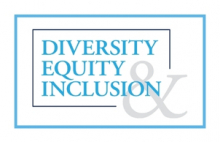Is the Ghost in Your Machine Killing Your IP Rights?
August 2, 2022The recent rise in the use of “artificial intelligence” (AI) has generated a host of new legal challenges and questions, ranging from sentience to the ownership and legal status of works and other intellectual property generated by or with the assistance of an AI.
For intellectual property, the law usually requires that a person be identified as the source of the work. In copyright law, this person is referred to as an “author,” while in patent law, this is the “inventor.” With a few notable exceptions, authors and inventors are natural persons, not companies, trusts, or other “legal persons”, and they are the original owners of the intellectual property rights associated with their creations. Needless to say, these rights can be very valuable, and it is important to have clarity as to who owns and controls them. Thus, documentation of ownership both prospectively and after the fact already has a well-established legal framework.
It has long been the case that human creators of intellectual property are assisted by machines and tools, but the intellectual effort underlying the work has traditionally been performed by a human. As technology has advanced, however, some works are now being generated almost entirely by machine, often after an extensive training period by its creator, and without human intervention or creative input at the time of creation. For example, art generating machines such as DALL-E 2 may use only a single human suggestion to generate multiple different detailed artworks. As such machines take on a larger role in creation, it is becoming increasingly important to determine whether there are intellectual property rights to substantially machine-generated works and, if so, who owns them.
Currently, there are no laws or U.S. Supreme Court decisions that directly address this question. However, the various agencies that handle copyrights and patents have begun to issue guidance as they confront the question. In 2019, Steven Thaler attempted to register a copyright for artwork entitled “A Recent Entrance to Paradise,” in which Thaler identified the author as a software AI named the “Creativity Machine.” Thaler was simply noted as the owner of the software. The Copyright Office refused registration on grounds that U.S. law does not recognize AI authorship. In February of 2022, the Copyright Review Board affirmed the refusal.
The Review Board reasoned that copyright registration requires a human author because the law requires a minimum amount of creative human effort in the creation of the work, and an entirely AI-generated work fails this test. Additionally, the Review Board noted an 1884 Supreme Court decision1in which the high court held that copyright “was the exclusive right of a man to the production of his own genius or intellect.” This venerable principle has been confirmed repeatedly by U.S. courts since, including in a recent 2018 decision2in which the Ninth Circuit court held that a monkey is statutorily ineligible to own the copyright to photographs he took of himself using a photographer’s unattended camera.
The United States Patent and Trademark Office (USPTO) has articulated similar principles with respect to patents. Thaler filed patent applications in 2018 and 2019 directed to a food container and an emergency light device, identifying the inventor as an AI known as “DABUS” (Device for the Autonomous Bootstrapping of Unified Sentience). The USPTO ruled that DABUS is not an inventor because it is not a human. Thaler filed similar applications in other jurisdictions as well, and the European Patent Office, like the USPTO, rejected the application, but the South African Patent Office and the Federal Court of Australia accepted DABUS as an inventor.
The fundamental question of AI creation has potentially far-reaching practical implications for those using computer software to generate creative or inventive works because if works do not have a human inventor, they may fall into the public domain and become available for use by anybody without restriction. Of note, non-fungible tokens (NFTs) associated with digital collectibles have enjoyed an explosion in popularity, and in many cases the digital collectibles are generated algorithmically in sets, using computer software, probability tables, and randomization to determine how many of the resulting digital collectibles contain a given feature. This structure, similar to “loot drops” in video games, allows human artists to create the framework of an NFT collection (e.g., defining the various visual elements that could appear in any given digital collectible) and then combine the various options into completed works based on machine logic.
The presence of the machine at creation raises the question of authorship, and it is unclear whether digital collectibles created in this manner have authors or copyrights. If they do have authors and copyrights, the lack of legal clarity over their identity creates practical concerns. Is the author the person or company that generated the underlying visual elements, the software code, the randomization algorithm, and/or the training data, and does it matter if any of these tasks were performed by a machine instead of a human? Because misidentification of the author at registration could result in loss of copyright, and an ineligible author may place the work in the public domain, addressing this uncertainty correctly is critical.
It is important for all enterprises using AIs to think critically about intellectual property issues on both sides of the AI. If you have questions or concerns regarding NFTs, the use of AI, copyright ownership, or any other interactions with computers and intellectual property rights, please contact an author of this publication or any other member of our Intellectual Property practice group.
The authors would like to thank Olivia Dixon for her contributions to this article.
1Burrow-Giles Lithnographic Co. v. Sarony, 111 U.S. 53 (1884).
2Nauro v. Slater, 888 F.3d 418, (9th Cir. 2018).








